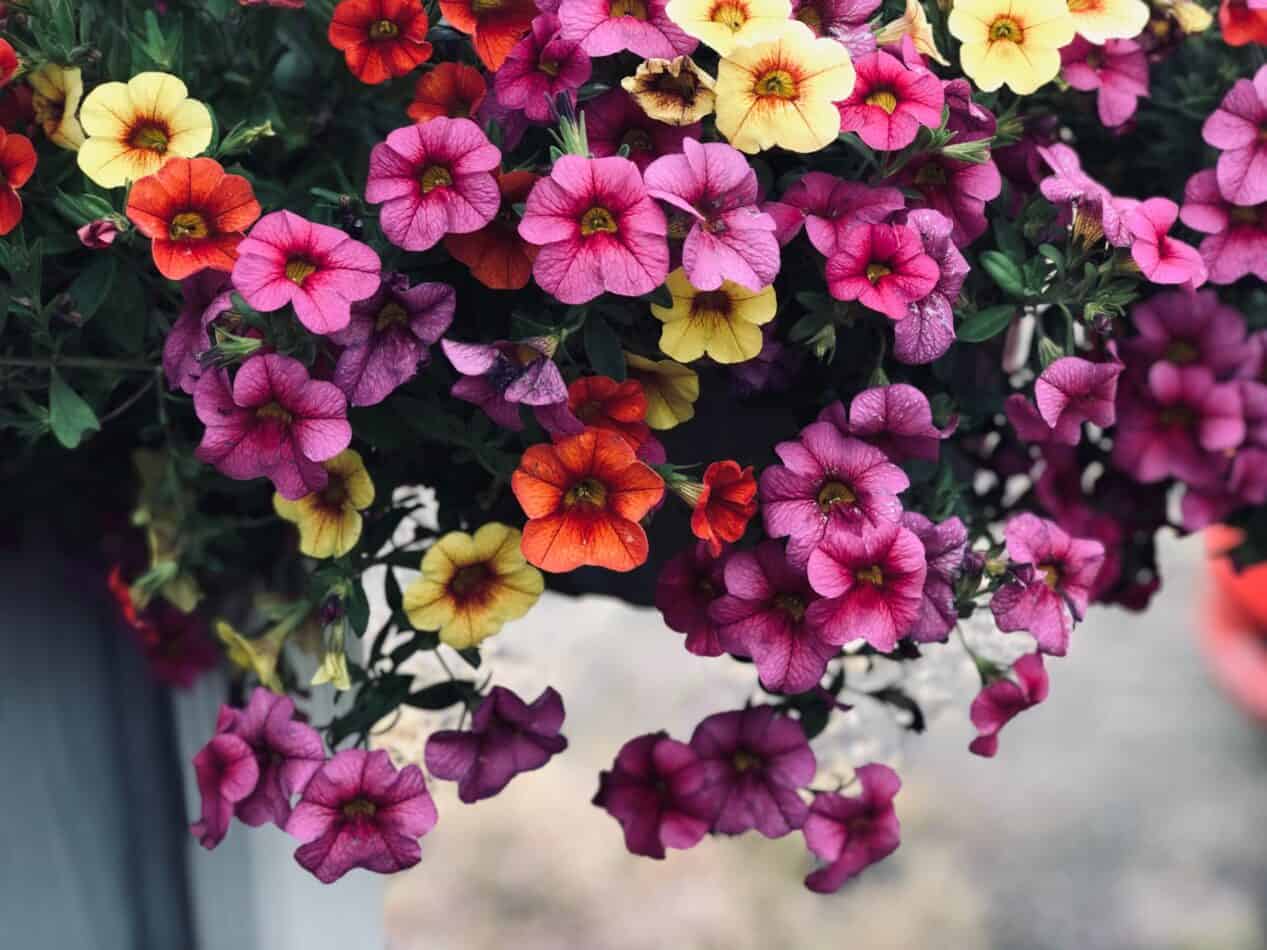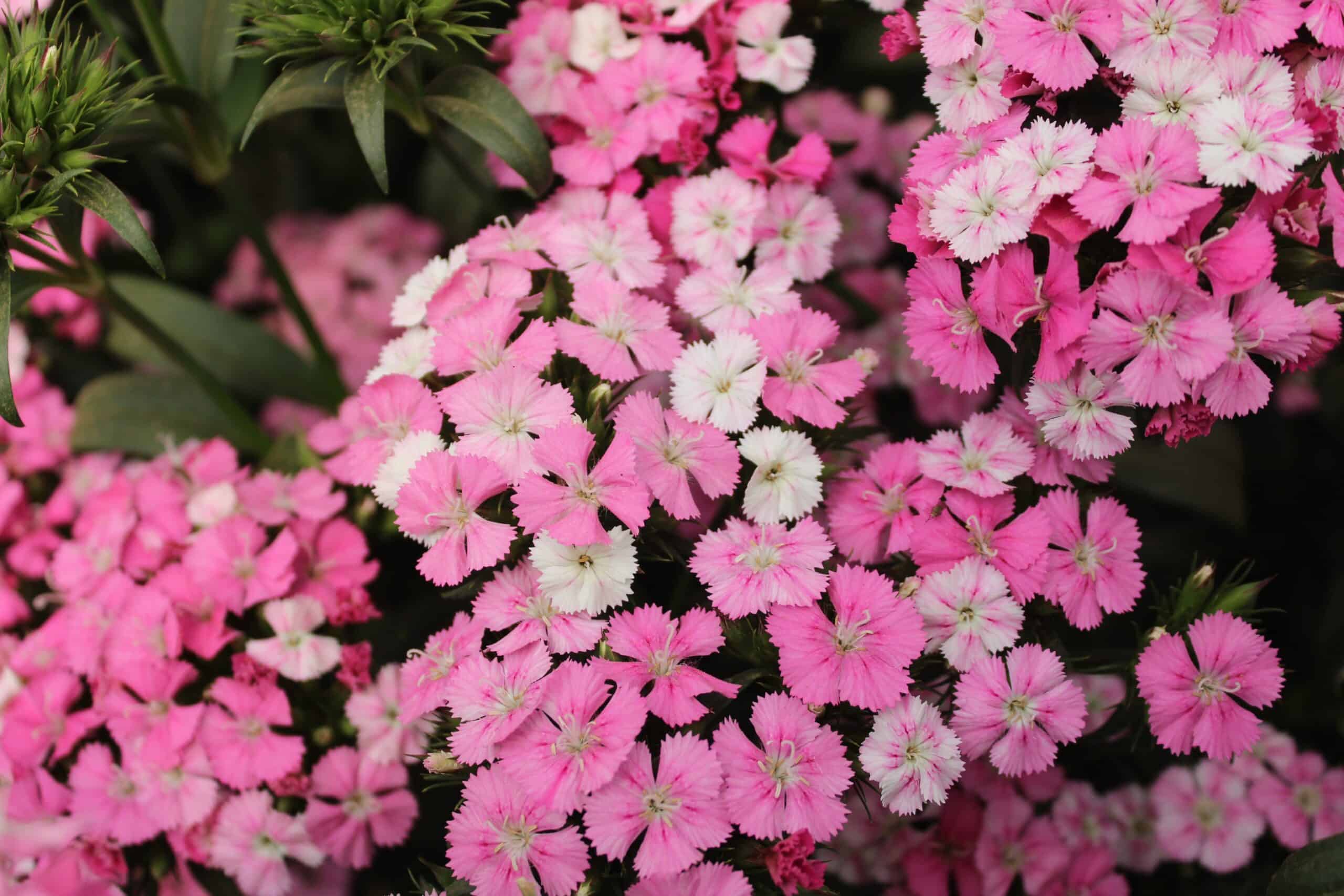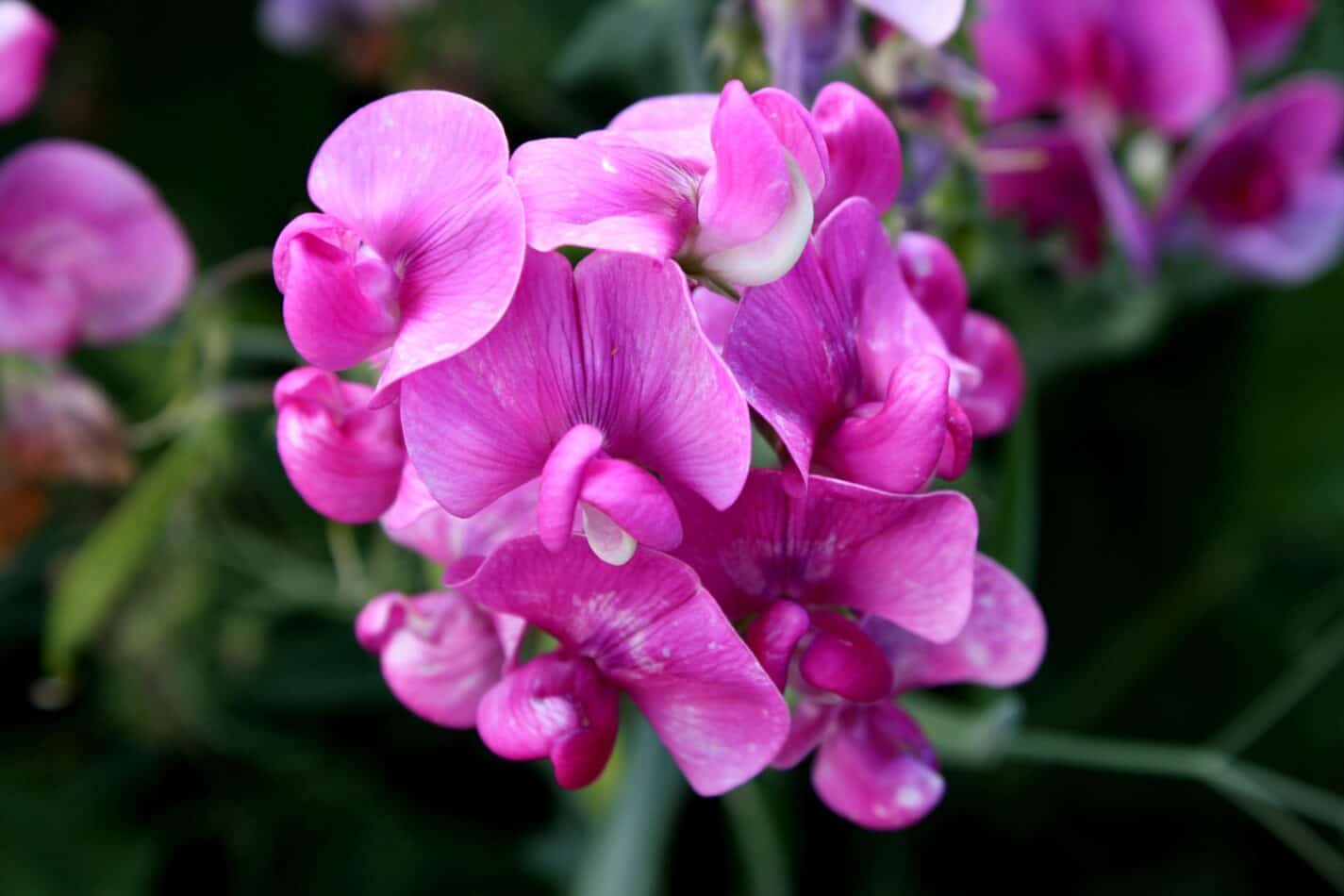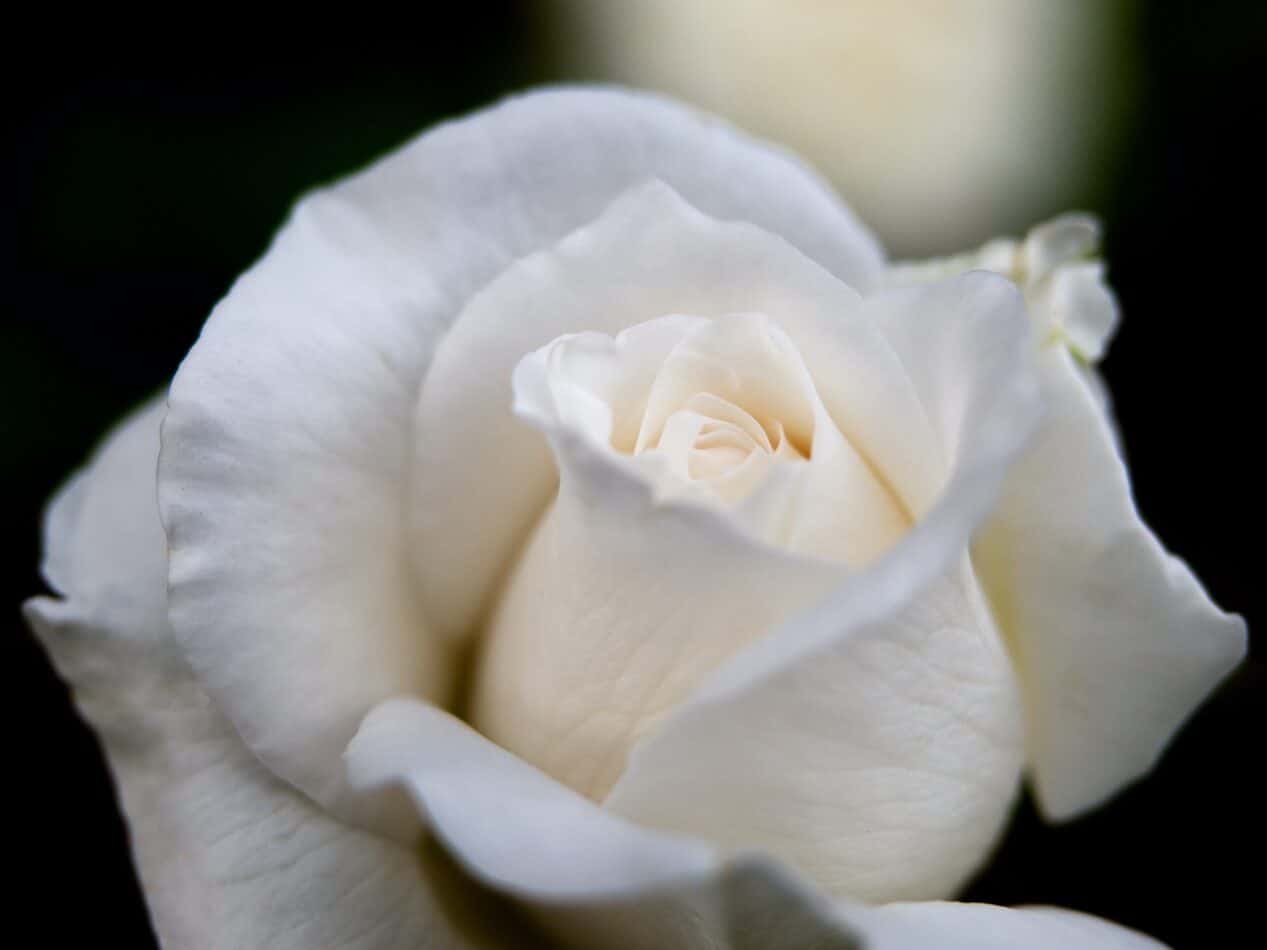The tall, stately, classic gladiola is the August birth flower. A member of the iris family, gladiolas are also called Sword Lilies. Their name is attributed to their sharply pointed leaves and tall stalks of flowers with pointed tips. The flower name in Latin means sword-swinging gladiators of ancient Rome.
The plant does not have any sharp edges, and there is no danger in cutting yourself or someone else with these lovely August flowers.
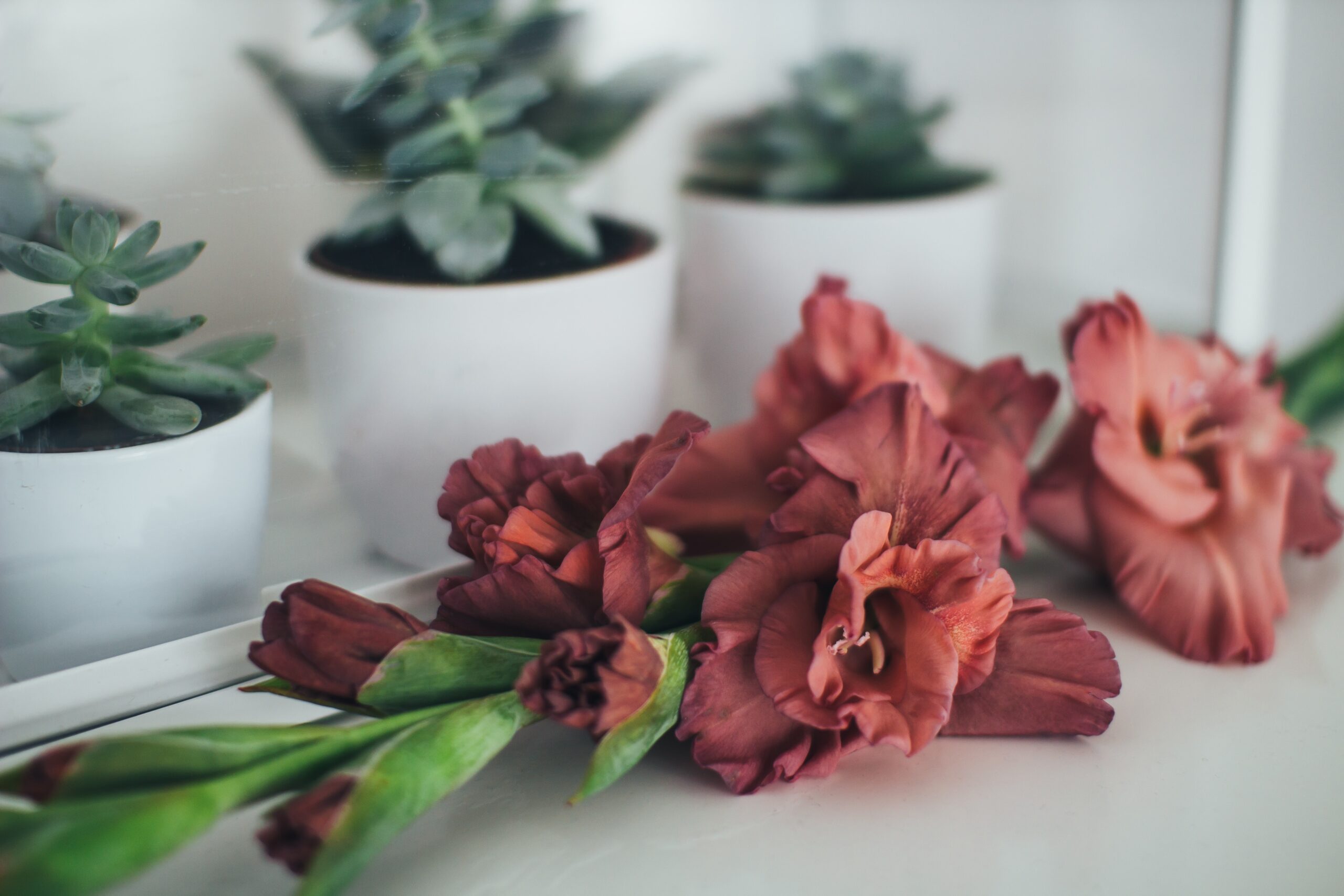
Gladiola Basics
There are over 250 types of gladiolas, commonly called ‘glads.’ They range in height from 3-5 feet and produce rows of colorful blooms along the length of the stem. The blooms can be in single or double rows, and there is a multitude of blooms colors. The flower’s petals can be smooth, ruffled, wavy, or frilly.
Gladiolas start from corms (bulbs) and will bloom in mid-summer. The bulbs multiply each year and will live for many years. The gladiolus bulb is called a corm that can be unearthed and stored through winter in cold climates. Contrary to many other perennials, the flower does not have a proper bulb.
Gladiolas make long-lasting cut flowers, and the blooms begin to open at the bottom of the stem, work their way up, and end with the top bloom.
They are native to Africa, the Mediterranean, and the Middle East. The flowers are recorded as being widely cultivated in the early 1,800s and have been extremely popular since then. Records indicate the gladiolas started with only seven original species and have grown to over 10,000 different cultivars today.
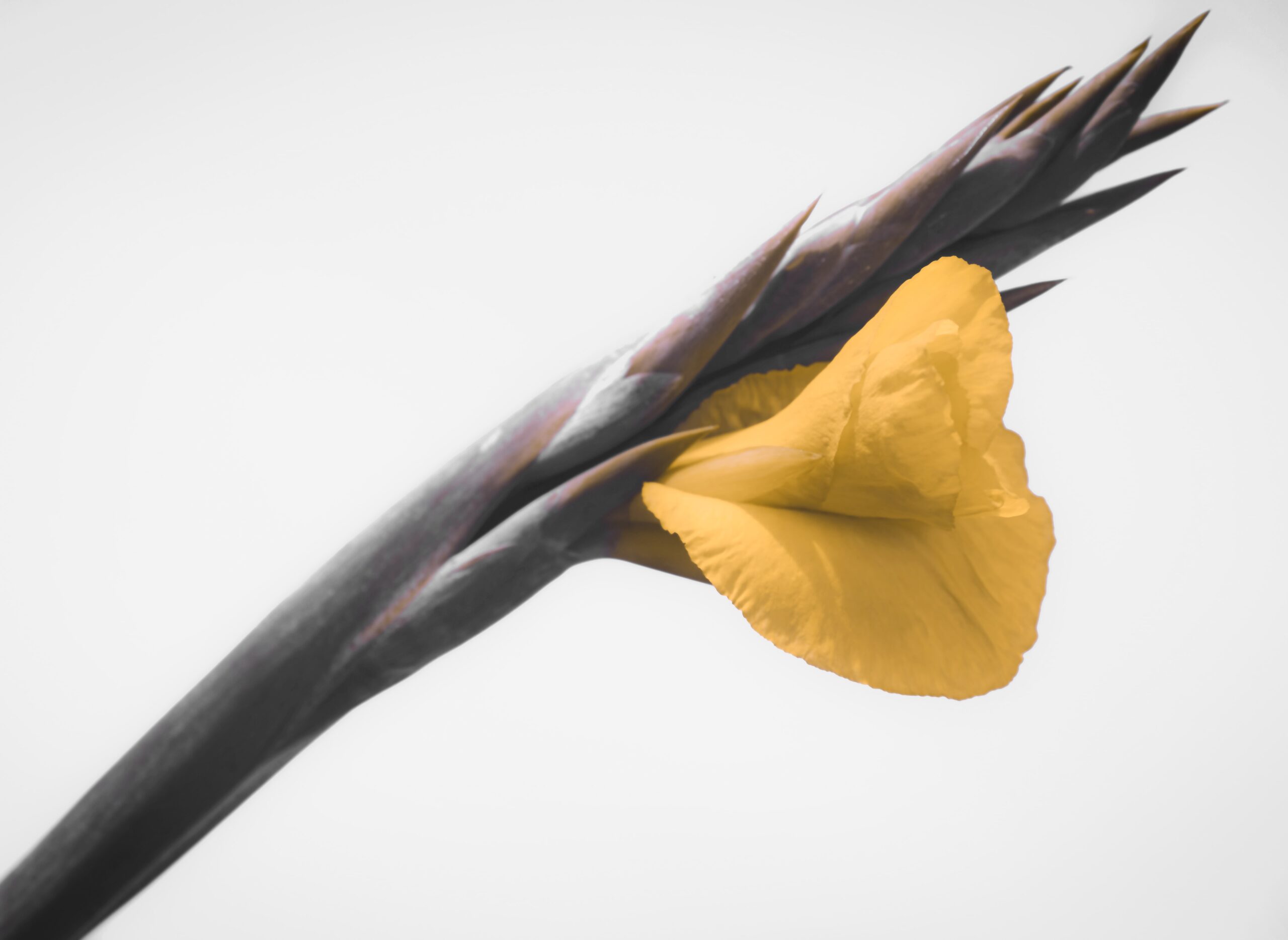
Symbolism
Because the plant name is derived from the Latin word for gladiator, the flower symbolizes strength, sincerity, and moral integrity. The flowers also symbolize remembrance and are a reminder of ancient battles fought with swords.
Gladiolas are also a symbol for healing since the plant was used in British culture to treat physical ailments. The corms (small bulb-like roots filled with food for the plant) of gladiolus plants were used to draw out splinters and thorns. Corms were dried and crushed into powder and mixed with goat milk to soothe colic symptoms in babies.
Some parts of the plant will cause skin irritation, and gladiolas are no longer used for healing purposes.
In the Bible, there are several references to lilies, and many people consider these references are about the gladiolas since they were common flowers in the region at the time.
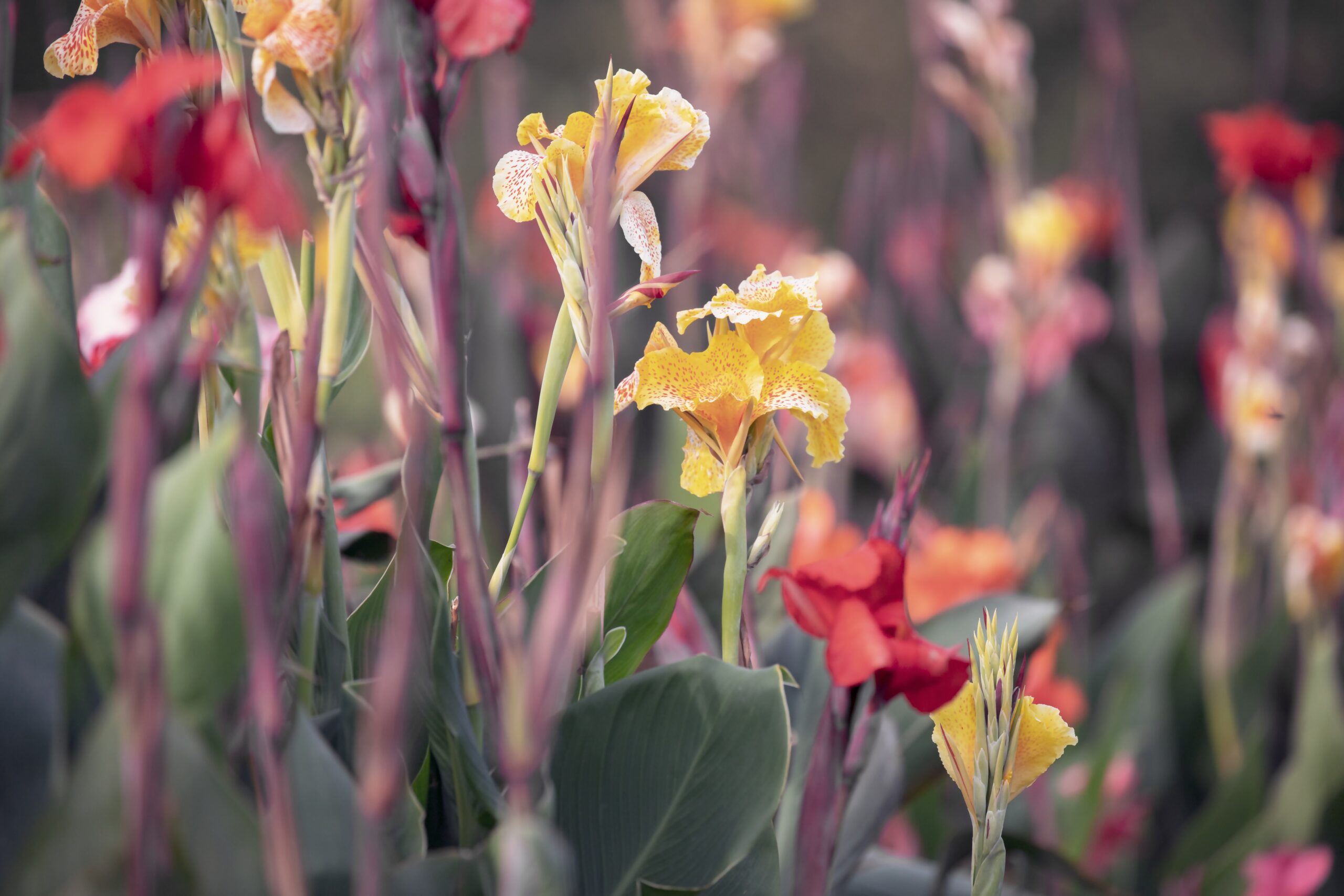
Meanings
The general meaning of the flower is strength, but each bloom color has a designated meaning to go along with the meaning of strength. The flower also means attributes associated with being a gladiator, like physical strength, faithfulness, persistence, calmness under pressure, and strength of character.
* Red gladiolus means romance, passion, and love. It is ideal for giving to that special someone on Valentine’s Day or on their July birth date.
* Pink blooms mean love but not the romantic type. Ideal for gifting to a sibling, parent, or friend.
* Yellow is the color of friendship and means joy and positive energy. The perfect flower to give to a friend who is going through a difficult time.
* Purple blooms mean royalty, fortune, and beauty and will make a good birthday gift for someone who loves unique things.
* White blooms mean purity and innocence. White gladiolas blooms are often used in bridal bouquets and wedding decor. An all-white bouquet of gladiolas makes a significant statement at a wedding, anniversary, or birthday celebration.
* Any color of gladiolas flower when given to is meant to pierce the recipient’s heart. The floral gift conveys feelings of infatuation and hopes the recipient feels the same way.
What we love from Amazon this week
Buy these wonderful flowers directly from Amazon:







